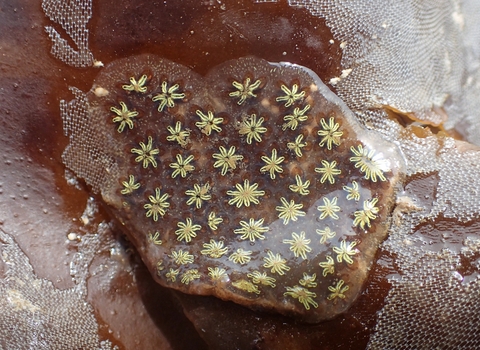
Star ascidian by Wembury Marine Centre
Star ascidian
One of the most eye-catching sights on the rocky shore, this mind-boggling species resembling a collection of beautiful pressed flowers is actually a colony of individual animals!

Star ascidian by Wembury Marine Centre